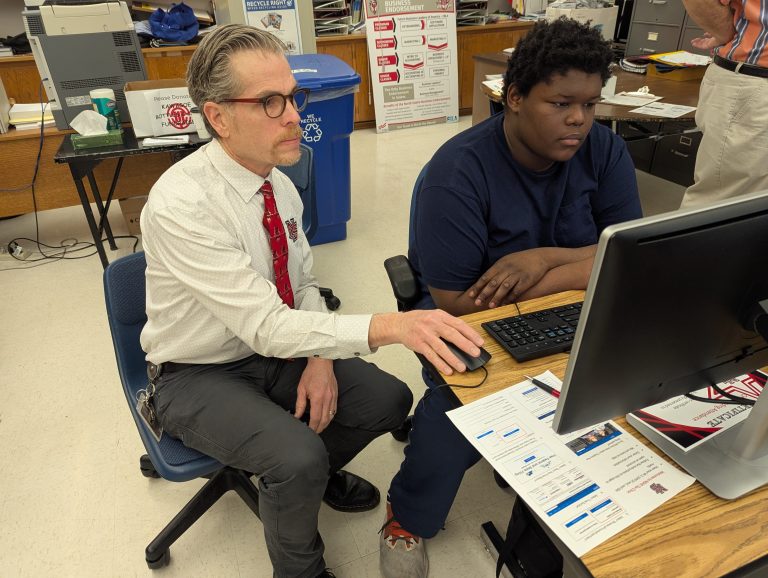Three years ago, in June 2020, the Salem area economy was beginning to struggle out of the massive two-month job loss caused by business shut-downs to stem the spread of Covid. The pandemic was just getting started then, and vaccines were six months in the future, but job recovery had already begun.
In addition, over the years of the pandemic, from 2020 through 2022, employment in Salem’s major industries was affected in different ways. As of May 2023, all are fully recovered, with employment back to pre-pandemic levels and in some cases exceeding it. But several are just barely recovered and still struggling to hire. One industry actually added jobs during the pandemic.
Let’s analyze employment in the years 2020, 2021 and 2022. Then we’ll look briefly at unemployment and inflation, and the latest about when we might see a recession. The effects of the pandemic still permeate all these important economic topics.
Total job losses and total job gains set records during the pandemic.
Job loss was unprecedented as nearly 22,000 jobs in Marion and Polk counties disappeared from February to April of 2020 (see graph above) But employment started to recover almost immediately. From April (the employment low) to December, 12,000 jobs were recovered.
In spite of substantial job recovery in the last half of 2020, the Salem area had still lost 6% of employment from December 2019 to December 2020.
The worst post-World War II recessions occurred in the early 1980s, and in 2007-08. As a comparison, the largest year-over-year job loss in the early 1980s was nearly 3%. The largest loss during the recession of 2007-08 was 3.5% of jobs.
Recovery during the Covid years was also unprecedented. The largest employment gain in the Salem area occurred from December 2020 to December 2021, a 5% gain. A smaller increase of 3% followed the next year.
As a comparison, the largest gain during the great recession of 2007-08, just under 4%, occurred nearly six years into the recovery period, in 2014.

It shouldn’t be surprising that the employment recovery of Salem’s major industries displayed different patterns (see graph two) The largest industries involved extensive contact with the public, namely retail trade, and leisure and hospitality. These industries experienced business shut-downs to slow the spread of Covid, and substantial job losses were the result.
Both industries also experienced hefty job gains by the end of 2020, but hadn’t recovered to pre-pandemic levels. In fact, by December of 2020, no major industry had recovered to these levels, with one exception – I’ll explain later.
By December of 2021, the industry employment picture had improved.
Retail trade had fully recovered to pre-pandemic levels, plus a handful of jobs. Construction, which lost 1,000 jobs from March to April of 2020 – 6% of its employment – was recovered. And professional and business services (includes lawyers, accountants, and staffing agency employment) and other services (hair salons, auto repair, etc.) were also recovered by the end of December 2021.
However, health care and social assistance, leisure and hospitality, and local government education (K-12) still were short a substantial number of jobs – not surprising as these were hard hit by the pandemic.
By December of 2022, most major industries had recovered. Leisure and hospitality and local government education were still short a small number of jobs.
Employment in the transportation, warehousing and utilities industry was a different story throughout the three years.

This industry added jobs in 2020, as consumers took to online shopping in a big way. The industry saw a nearly 10% employment increase that year. Employment stayed at that level during 2021, and then declined during 2022, as pre-pandemic consumer shopping behavior began to resume. By May of 2023, the industry was a few jobs short of its pre-pandemic level.
Now about unemployment – it has been setting records.
First, the unemployment rate increased from 4.4% in March of 2020 to 12% in April of 2020, and the number of unemployed persons soared from 8,000 to 23,000. The 12% rate set a record, matching the highest rate of the recession of the 1980s.
Then, in December of 2020, the rate set another record – it nearly halved, dropping to 6.1% in eight months. In the recessions of the 1980s and 2007-08, it took years for the unemployment rate to come down from double digits.
And, in June of this year, the Salem area unemployment rate was at a near-record low of 3.6%, down from 3.8% in May. The record low for Salem, going back to the early 1970s, occurred in December of 2019 at 3.5%.
What about inflation?
The consensus is that the inflation rate of 8% in 2022 was due in large part to the federal aid packages to businesses and individuals, which accelerated spending (increasing demand), and factors that constrained supply, the war in Ukraine being one.
Eight percent inflation didn’t set a record. That record occurred in the recession of the early 1980s, at 13%.
Even though inflation has recently fallen to 3% annually, the Federal Reserve Board is still concerned. The U.S., Oregon and the Salem metropolitan statistical area have been experiencing healthy job increases monthly, unemployment is at rock bottom, and wage increases have been substantial, especially for lower-paid workers, although increases have slowed. But the Fed and many economists see all this as signs of an “overheated” economy. So, more interest rate hikes from the Fed are being predicted.
Whether or not a recession will result is anybody’s guess. If recession appears, it is believed that the resulting unemployment will be “mild” – perhaps in the 5%range.
At least two industries are still struggling to hire, health care and social assistance, and leisure and hospitality, although employment in both is back to pre-pandemic levels.
Hiring is always difficult when unemployment is low, and it is more so now. After three years of pandemic, quit rates are still high and job seekers seem to be more selective about the types of jobs they are willing to take. How long the economy will display the after-effects of the pandemic, only time will tell.
Pam Ferrara of the Willamette Workforce Partnership continues a regular column examining local economic issues. She may be contacted at [email protected].
STORY TIP OR IDEA? Send an email to Salem Reporter’s news team: [email protected].
SUPPORT OUR WORK – We depend on subscribers for resources to report on Salem with care and depth, fairness and accuracy. Subscribe today to get our daily newsletters and more. Click I want to subscribe!

Pamela Ferrara is a part-time research associate with the Willamette Workforce Partnership, the area’s local workforce board. Ferrara has worked in research at the Oregon Employment Department, earned a Master’s in Labor Economics, and speaks fluent Spanish.




